
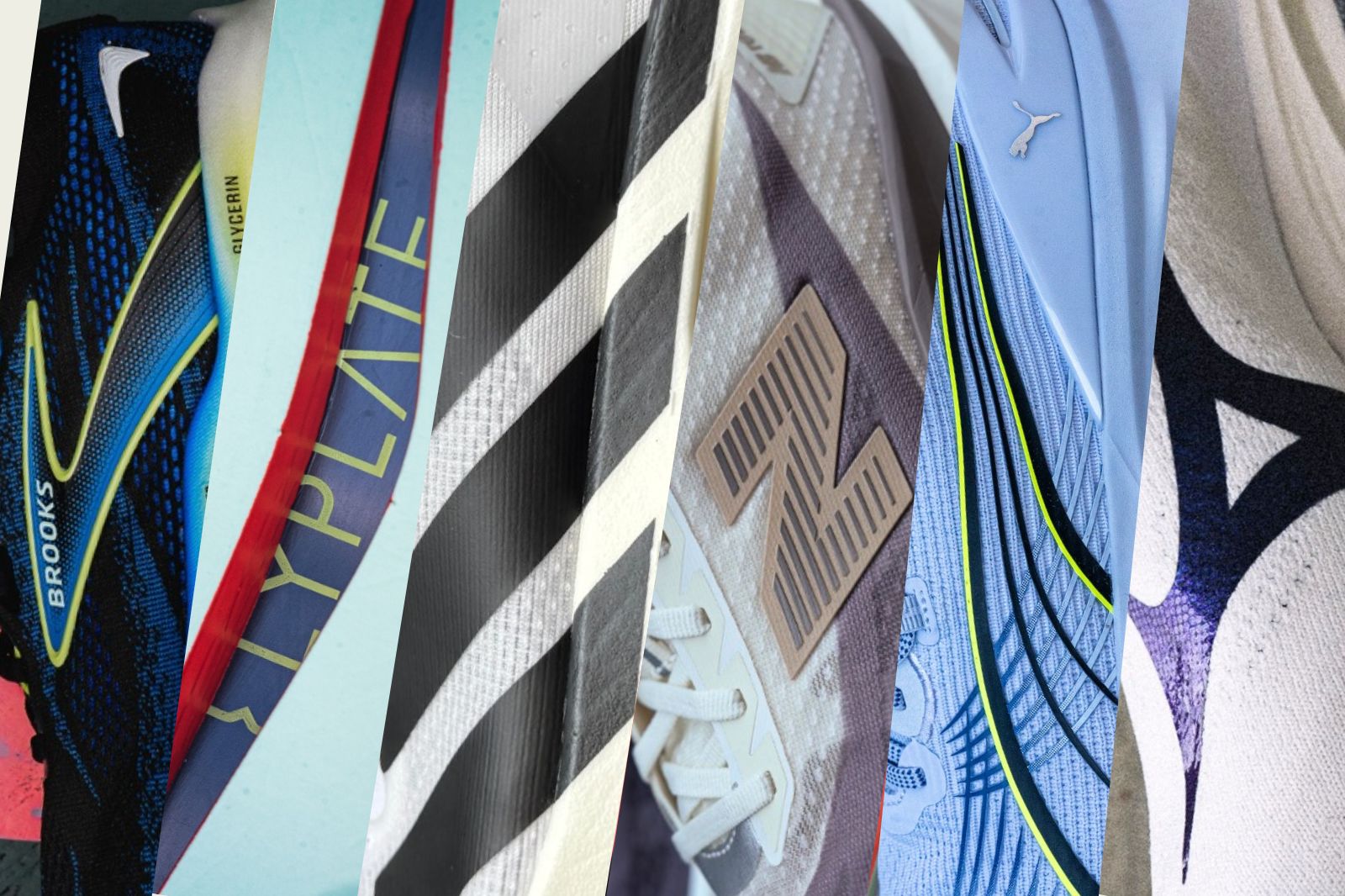
We independently review everything we recommend. When you buy through our links, we may earn a commission.
We break down the top running shoes 0f 2025, so far
From racing to daily trainers to stability to super trainers, we got you covered
Any questions? Drop it in the comments. Otherwise, enjoy the ride.
Well, we’ve made it through half of 2025. It seems like just yesterday we were lacing up the Adidas Evo SL for the first time, the initial match to ignite a fire first half of the year for running shoes. That shoe in particular is part of a trend of keeping thing simple and delivering big, something that was long needed in the running space. We’re finally seeing some of the premium foams trickle down into everyday trainers, and the results have been promising, to say the least. Thrilling, in some respects.
Of course, we also have the super trainers and super racers that are pushing the envelope of what is possible underfoot. All sides of the spectrum have seen representation, from the ultra fun Hoka Cielo X1 2.0 to the stripped down Nike Streakfly 2. Then there are shoes like the just-announced Nike Vomero Premium, a comfort trainer with a whopping stack height of 55 mm, a true triple decker if there ever was one. Will that one make it on the final year roundup? I guess we’ll see.
For now, this should be enough to get you going. There’s a lot more exciting stuff coming, including the Asics Metaspeed Ray, Asics Superblast 3 and Sonicblast, Adidas Prime X Strung 3 and Takumi Sen 11, Hoka Mach X 3, Nike Structure Premium, Brooks Glycerin Max 2, Mount to Coast H1, and probably a dozen others we’re forgetting about.
The end of 2025 will be here before you know it, but let’s enjoy what we got right now.
For doing everything, all of the time. From daily training to uptempo to race day in a pinch, these are our favorite picks for a shoe that won’t ever leave that spot by the front door. Except when you wear them, of course. Which will probably be every day.
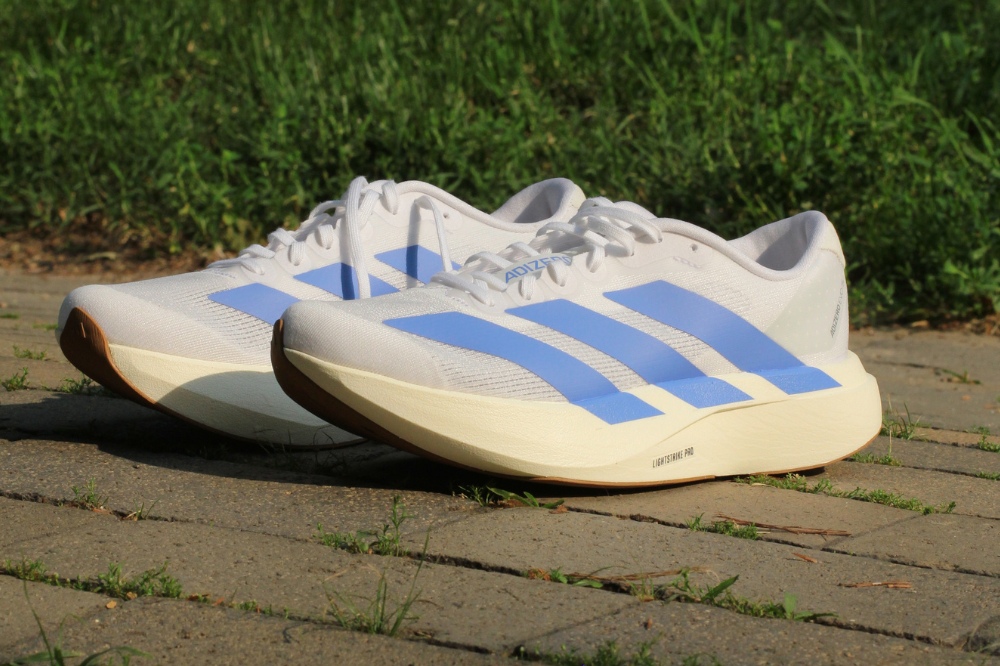
Race day or faster paces
7.9 oz (224 g) for a US M9,
6.6 oz. (188 g) for a US W7.5
38 mm in heel, 32 mm in forefoot (6 mm drop)
Look, we can already tell you that this shoe will take home the award for best shoe of 2025. In the words of the Driving Crooner: it’s simply too good. Yes, we originally tested this shoe last fall. Yes, it saw a limited release in December. But it wasn’t widely available until this year, and once it was, it caught fire.
The full Lightstrike Pro midsole is bouncy but not soft, the mesh upper is lightweight and breathable. The Continental outsole rubber is grippy as always. It can do anything you want, from 20-mile long runs to everyday miles to uptempo days. It can even race if you need it to. Unlike other shoes, the sensation doesn’t disappear; in fact, it may even get better over time, giving you hundreds of miles of running bliss.
Then there’s the aesthetics. When we first saw this shoe in Berlin, we told Adidas this is an instant classic, a shoe that future shoes will draw inspiration from. We weren’t wrong. The simple design with three bold stripes has proven to be a winner and the colorways just can’t miss.
Lastly, there’s the price point. At $150, this shoe just can’t be beat. It’s full-on proof that sometimes simplicity wins, and in this case, it conquers. Hands down, this is the shoe of the year, maybe even the decade.
Drawbacks? We wouldn’t mind a gusseted tongue, or a bit more structure to the upper. But those are very minor complaints.
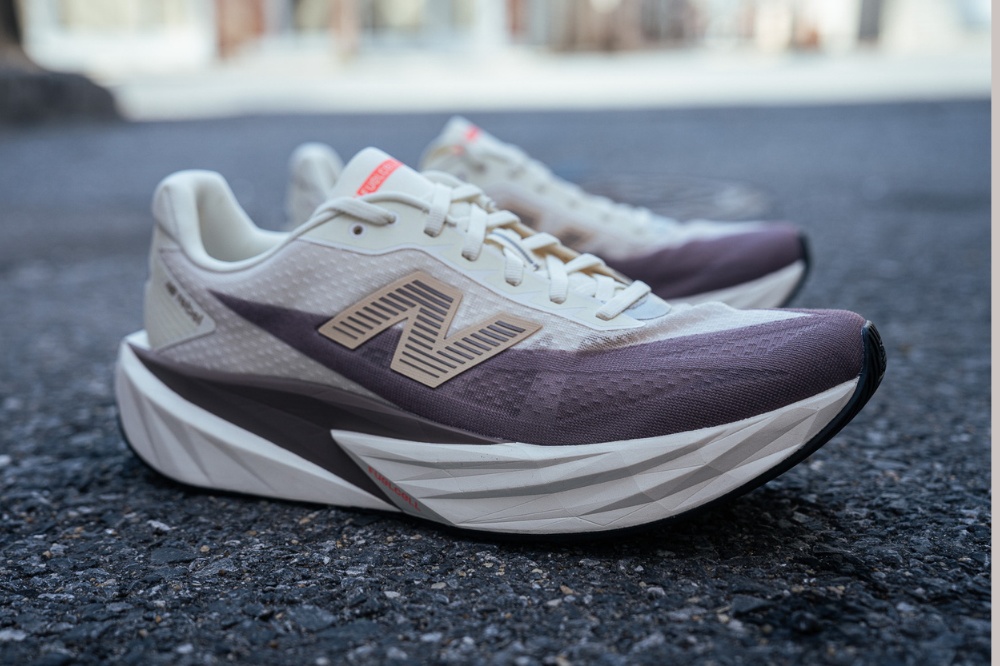
Daily training, tempo miles, budget race shoe
8.4 oz (238 g) for a US M10.5,
6.5 oz. (184 g) for a US W7.5
35 mm in heel, 29 mm in forefoot (6 mm drop)
Another modern icon, the Rebel has seen its ebbs and flows over the past half decade. Version 2 was a certified gem, both for its design and its straightforward performance in a lightweight package with a fun FuelCell midsole.
This shoe is not that shoe. But it’s still a fantastic offering, especially at the $140 price point. The PEBA blend of FuelCell foam is bouncy and fun. It’s soft, but not too soft, hitting that sweet spot between tempo shoe and daily trainer. The upper has improved over the last version, with a better tongue and heel collar. It’s still incredibly lightweight, especially for its stack height.
It’s also just a beautiful shoe, adding a lifestyle flair that brings a breath of fresh air into the performance side of things. It may be our favorite overall design of 2025, and that’s saying something.
Drawbacks? The magic midsole feeling in last year’s version had a tendency to die out after 150 miles. This year’s version has 5 mm of foam in the midsole, which we hope helps to extend its life.
Our favorite shoes for just getting the work done, reliable trainers to rack up miles, day in and day out.

Daily training, long miles
10.2 oz. (289 g) for a US M9,
9.1 oz. (258 g) for a US W7
45 mm in heel, 39 mm in forefoot (6 mm drop)
We’re not sure if DNA Tuned is the future of midsoles, but it’s the future of Brooks, and we’re glad we’re living in it. Instead of a singular piece of foam, or air units, or dual density layers, or whatever else, Brooks has mapped out and developed a midsole that takes into account impact zones, placing zonal foam densities in those specific areas. In the forefoot and the heel, two pucks of foam are blown up (larger air bubbles in the heel, smaller in the forefoot) to give runners the right feeling they’re looking for in a daily trainer (i.e. comfort in the heel, propulsion in the forefoot).
The result is a ride that feels right from landing to takeoff and back again, step after step, mile after mile. It’s not the Glycerin Max, but it’s pretty close. Combine all those things and you’re getting a shoe that holds a three-of-a-kind of performance, comfort, and longevity.
Drawbacks? It’s a bit heavier than we’d like for a daily trainer. The good news is that with a nitrogen-infused midsole and a thick layer of outsole rubber, this thing is going to last a long time.

Daily miles
9.9 oz. (281 g) for a US M9,
8.3 oz. (235 g) for a US W7.5
40.5 mm in heel, 34.5 mm in forefoot (6 mm drop)
Essentially the budget-friendly 1080, the 880v15 hits all the marks that a daily trainer should. The Fresh Foam midsole doesn’t have as much bounce, but it retains enough to provide a solid ride without feeling harsh.
The big change in this model is a higher stack height, now coming in at 40.5 in the heel and 34.5 in the forefoot (6 mm drop), giving it more cushion for the long haul. The upper is accommodating for all foot sizes and the outsole design adds durability and longevity to the shoe. In short, you’re getting the Toyota Corolla of running shoes, something that’s dependable and gets the job done.
Drawbacks? It did pick up an ounce over the last version, so it’s not the lightest shoe out there. But it’s still in the standard range of a traditional daily trainer.
Our favorite shoes for going fast over the course of 26.2 miles, a combination of comfort and performance all in one package.

Race day up to a marathon
7.1 oz. (200 g) for a US M9,
6 oz. (172 g) for a USW7.5
39 mm in heel, 33 mm in forefoot (6 mm drop)
Adidas took almost three years to update this shoe, but we can tell you that it was worth the wait. Everything was stripped down and tested and reformulated and put together for this one. From the new EnergyRods design (taken from the Pro Evo) to the soft woven mesh upper to the updated Lightstrike Pro formulation, this is the racer we’ve been waiting for.
I can personally attest to its effectiveness, having run a PR in the shoe at the 2024 Berlin Marathon. The outsole grip kept things steady through water stops and around corners, the midfoot locks down securely so there’s no movement, and the EnergyRods work to propel you through each step. It’s light and fast and balances both comfort and performance for the full marathon distance.
Drawbacks? The length on these is a bit weird, just make sure they’re not too short, or you’ll end up with lost toenails (as I did). Also, depending on where the EnergyRods hit your foot, you could see some issues crop up. Avoid those things and you’re sailing fast and free.

Race day up to marathon distance
7 oz. (199 g) for a US M9,
6.2 oz. (176 g) for a US W7.5
39.5 in the heel, 31.5 in the forefoot (8 mm drop)
For whatever reason, we just weren’t huge fans of the first version of this shoe, even though it was a cult favorite among marathoners. This one though– we’re all in.
The TPE yarn upper is light and stretchy and forms to the foot, with just a touch of structure in the heel collar. The real star of the shoe is the midsole– the all-new IncrediRun foam, a TPEE foam formulation that feels like a stack of Jell-O walking around, but converts to a trampoline at faster paces. It proves once and for all that fast doesn’t have to mean firm. The outsole grip also worked well in all conditions.
If you’re looking for something fun and fast, with an incredible amount of bounce-back, then this is your shoe.
Drawbacks? This is a squirrely shoe, so if you struggle with instability in your midsole foam, then you may want to search elsewhere. Also, it’s $290 (an increase of $15 after the tariffs).
Could you use these shoes for the marathon distance? For sure. But we’d rather use them for going even faster.
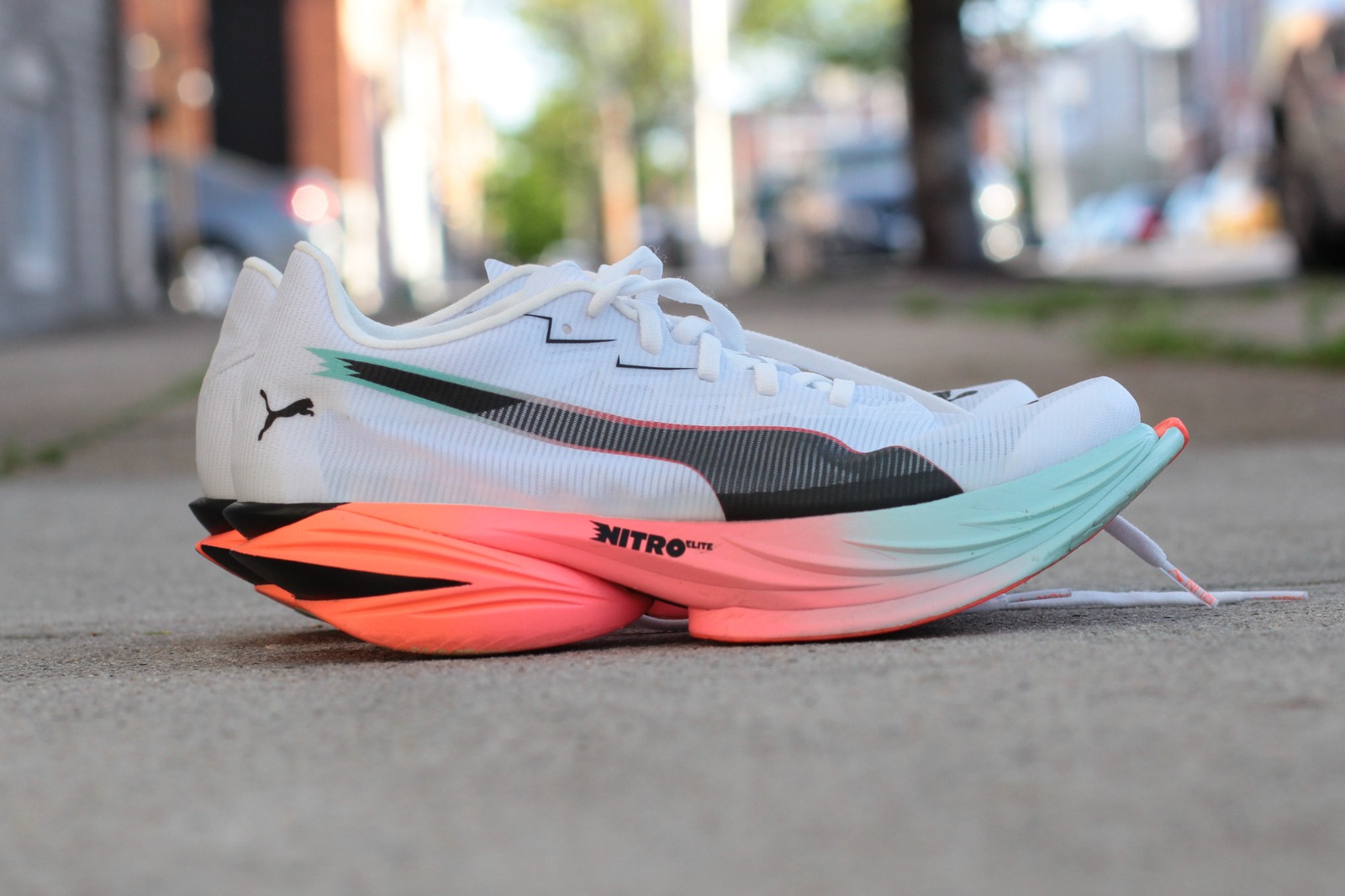
The fastest race day
6.3 oz. (178 g) for a US M9,
5.2 oz. (147g) for a US W7.5
40 mm in heel, 32 mm in forefoot (8 mm drop)
Quite possibly the most talked about race shoe of 2025, the Puma Fast-R Nitro Elite 3 has undoubtedly catapulted Puma into the elite tier of race day models. When the shoe came out, Puma touted an independent lab study that proved it to be 3.5% more efficient than the Nike Alphafly and Adidas Adizero Pro Evo 1. We were skeptical, so were most others.
But then it showed up on race day at the Boston Marathon as part of the Project3, and it turns out– the shoe kinda crushed. That’s all thanks to its wild design elements, including a restructured carbon fiber PWRPlate, an impossibly thin mesh upper, and an Aliphatic TPU midsole that is both bouncy and responsive. Combine that with an aggressive rocker that keeps you on your forefoot and this thing flies. Also, the Pumagrip outsole is the best in the game.
Now, this is designed to be a marathon shoe, and plenty of people have done just that. But we think it’s best suited for the half marathon distance. It’s super quick and works better the faster it goes, creating a speedy turnover. While the ride isn’t harsh, it does feel a little less cushioned than some other marathon shoes, and the overall design is just ultra aggressive. Meaning, if your body isn’t built for it, then you may be a bit beat up after a full marathon.
For anything less? This is your best bet.
Drawbacks? As with the Adios Pro 4, be careful where your toes are hitting. It’s a pretty narrow and cramped toe box, and we’ve seen some bloodshed at the end of 26.2. Another reason why we think this shoe is more ideal for the half distance. Also, it’s $300.

Race day, especially up to the half marathon
5.9 oz. (167 g) for a US M9,
4.9 oz. (139 g) for a US W7.5
40 mm in the heel, 32 mm in the forefoot (8 mm drop)
While the past several years of Nike running has been hit or miss (and that’s being generous), one thing is for sure– they know how to make a damn good racing shoe. Across the high-performance spectrum, Nike has lapped the competition for almost a decade. The initial Vaporfly was so far ahead of its time, to the extent that brands are only fully catching up now.
Of course, that means Nike has to remain nimble, often a difficult task for a large brand. Somehow though, they’ve managed to do it, by making tweaks to the Vaporfly but still keeping true to its nature. The full ZoomX midsole still gives you that magical feel on race day, something that nobody has really been able to replicate in the way that Nike does.
At 6.4 ounces, the shoe disappears on the foot, while the carbon fiber Flyplate provides all the leverage and propulsion to get you quickly through the stride. Yes, you can take this shoe to the marathon distance, but we prefer the Alphafly in that regard (still Meg’s top choice for the marathon). The Vaporfly, however, will get the work done at anything between 10K and 42K..
Drawbacks? As with a lot of Nike race shoes (or race shoes in general), this one could give you some heel lift thanks to the stiff carbon fiber plate. While Thomas and Meg didn’t have a problem with it, I could not figure out a lacing system that would get rid of it.
Could you use these shoes for the marathon distance? For sure. But we’d rather use them for going even faster.

Race day or speed workouts, 10K and under
4.8 oz. (136 g) for a US M9/W10.5
26 mm in heel, 22 mm in forefoot (4 mm drop)
We already sung the praises of the Vaporfly, but when it comes to race day shoes, the Nike Streakfly 2 may be the best race day shoe of 2025, period. The only caveat? You don’t want to take this past the 10K distance, and it’s best suited for the 5K.
It’s so freaking fast and fun that it’s hard to compare it to another shoe. Instead of playing in the gray area of race day, floating between super shoe and racing flat, Nike went all-in on this. They built the shoe on a track spike last, dropped the stack height down to 27 mm in the heel, and threw in an aggressive carbon fiber Flyplate, the same one found in the Vaporfly 3. The outsole rubber is also surprisingly sticky.
The result is a lighting quick shoe that feels like you’re always on your toes, as if an invisible hand is pushing you forward. I hit times I’m not sure I’ve ever seen in speed workouts and we’ve seen plenty of people rack up 5K PRs in this shoe already.
Maybe you’re next.
Drawbacks? I mean, $190 is a whole bag when it comes to such a singular distance for a race shoe. Is that what your fastest day is worth? Maybe it is, maybe it isn’t (we think it is).
Honestly, we just needed a way to throw this one in here. It’s not the fastest, but it for sure is the most fun race day shoe out there.

Race day or faster paces, any distance
7.7 oz. (218 g) for a US M9/W10.5
46 mm in heel, 39 mm in forefoot (7 mm drop)
Honestly, we weren’t sure how to fit this on here, but it deserves to be on here as much as any other shoe. It’s the most fun shoe, period. Whether that’s for racing or just plain running, it’s a ridiculously bouncy shoe with a MetaRocker geometry that almost feels like you’re not even doing anything. The winged carbon fiber plate gives a touch of stability (kind of), while the dual layer PEBA midsole offers up a ride that will put a smile on your face.
We appreciate that Hoka updated the laces on this version and made the upper more breathable and just better overall.
We ran a half marathon in this shoe back in February, and it was way more fun than it should’ve been for a race in Miami.
Drawbacks? The medial cutout is severe, so if you are a pronator or suffer from form problems, this shoe will cause some problems if you’re going the distance. It also feels crazy to walk in, so be careful heading to the start line.
When it comes to super trainers, we look at shoes that don’t really fit into the race day bucket, but still have all (or most) of the elements found in a a race day shoe. Things like a plate (carbon fiber or otherwise), premium materials, the best midsole foams, and maybe the kitchen sink. Basically, fun shoes meant for all the miles.
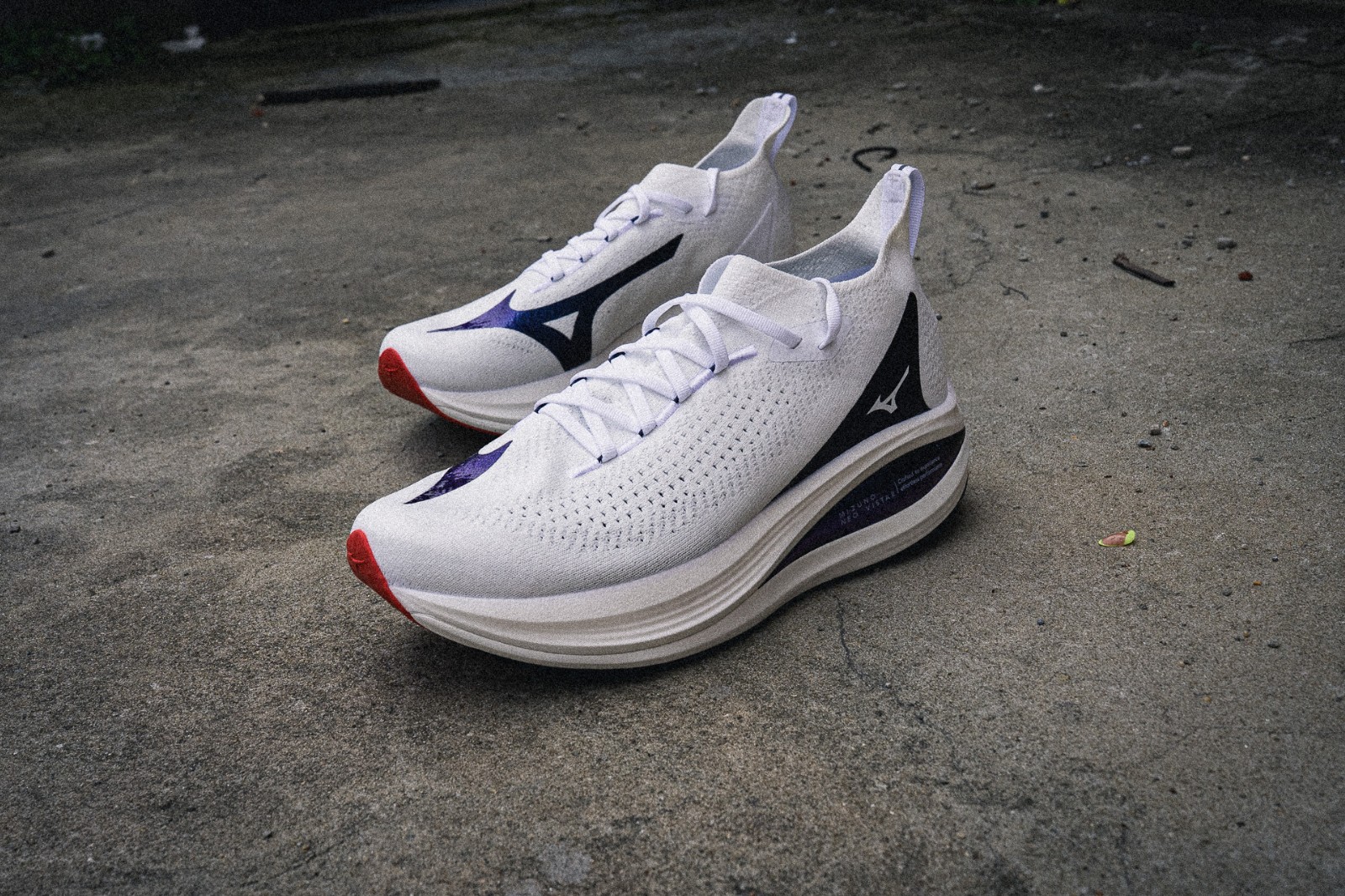
Daily miles and long runs
9.3 oz. (264 g) for a US M9,
7.8 oz. (221 g) for a US W7.5
44.5 mm in heel, 36.5 mm in forefoot (8 mm drop)
We’d be lying if we said we weren’t totally surprised by the first version of this shoe, which featured much of the same design, but done differently. It was soft as hell but a lot of fun to run in, and the knit upper fit really well (though it was a bit warm).
This version builds on that one, with a more breathable knit and nitrogen-infused ENERZY NXT midsole that’s super bouncy and comfortable. With that kind of softness, you want some structure, and the Neo Vista utilizes the glass fiber-infused Waveplate to do just that, while adding a bit of propulsion on toe off.
Meg has already racked up over 100 miles in the shoe and she’s already said it may be her favorite trainer (!) of the year. For someone who runs as much as she does, that’s saying something.
Drawbacks? It’s a little roomy, so while that’s great for those who have bigger volume feet, it may be too much for the narrow footed among us. You may have to go a half size down.
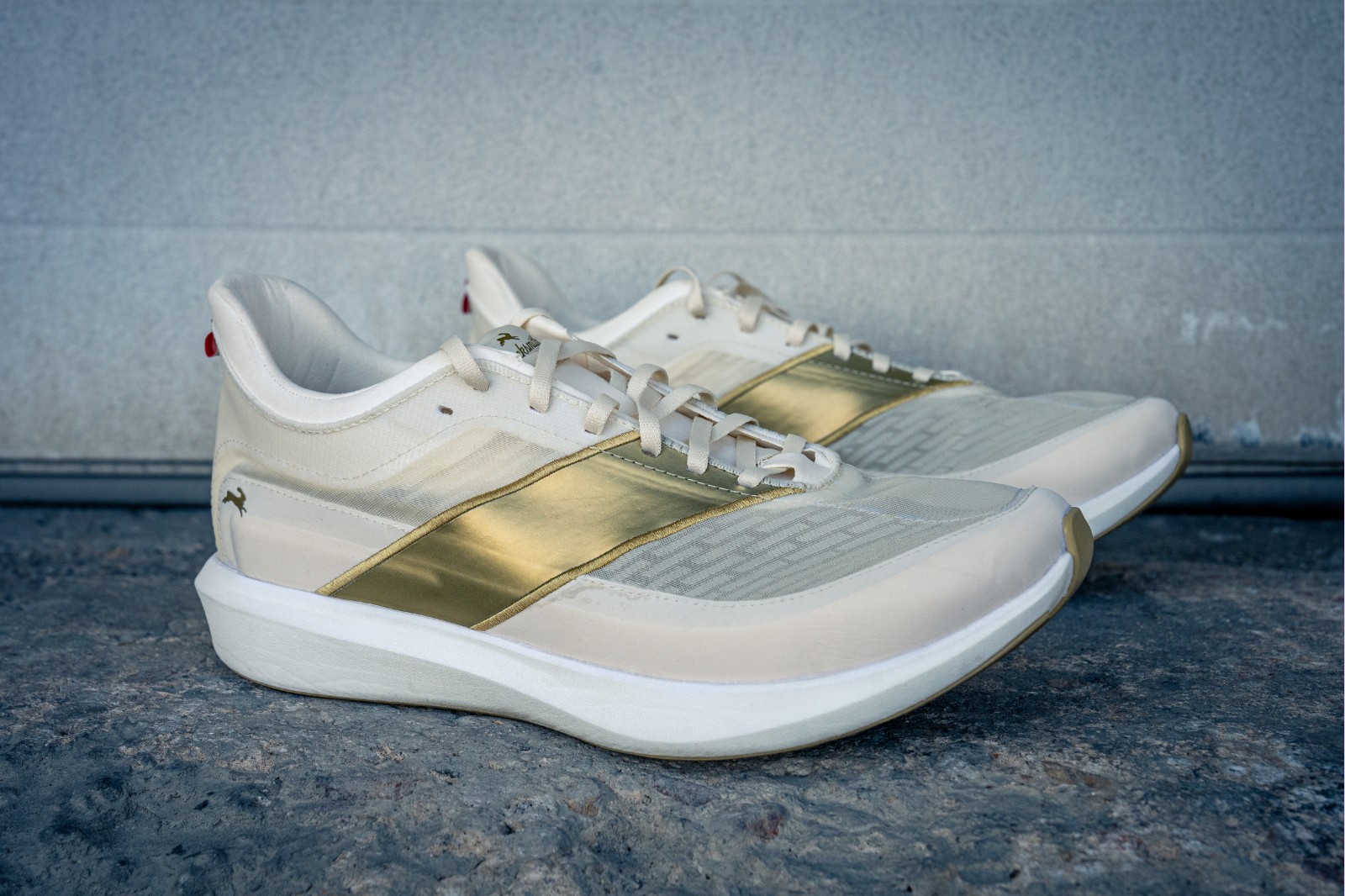
Race day or faster paces, any distance
9.5 oz. (269 g) for a US M9,
7.8 oz. (221 g) for a US W7.5
44.5 mm in heel, 36.5 mm in forefoot (8 mm drop)
Technically this is a race day shoe, but we’re gonna put it into the bucket of super trainer. Why? Because it just isn’t one of the fastest shoes out there, lacking the aggressiveness of the true race day options and coming in as one of the heavier models out there.
HOWEVER– this really is one of our favorite shoes of 2025 (well, for me anyway). I had zero expectations for this shoe, considering the Tracksmith Eliot Runner always felt like more of a lifestyle shoe. But running in this shoe is so smooth and effortless and fun, thanks the the drop-in Aliphatic TPU midsole and PEBAX midsole underneath that. Throw in a carbon fiber plate for stabilization and you have a pretty fantastic stack that just feels great underfoot. It’s really one of those shoes you just want to wear all the time.
The materials and small design touches feel like you’re getting a bespoke shoe, which is good since it costs $280. So while we might not choose this as our race day weapon, we know we can count on it for anything else.
Drawbacks? It didn’t bother us, but some users reported a squeak that comes from the midsoles rubbing together. It may be grating on the ears if that kind of thing annoys you.
The word stability used to conjure up images of hard plastic supports, a slew of overlays, and a generally dad-vibe aesthetic. Things have changed over the last few years. Now you can find some great stability options that still look good, feel good, and keep your foot in line with just a touch of support.
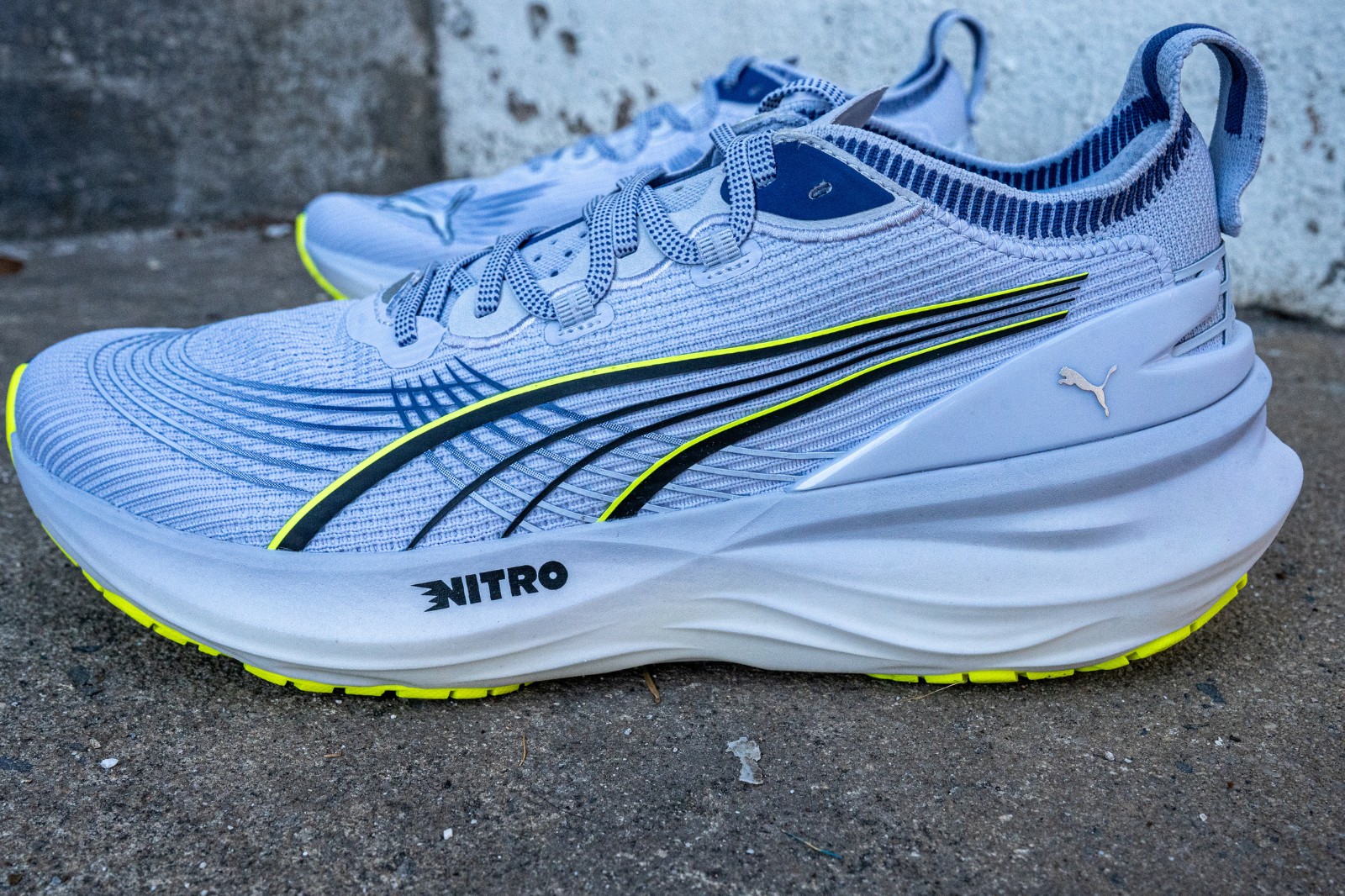
Plush road runs with moderate stability
10.3 oz. (292 g) for a US M9,
8.9 oz. (252 g) for a US W8
38 mm in heel, 28 mm in forefoot (10 mm drop)
It’s always nice to have a shoe that is done just right, when purpose and performance collide. The Puma ForeverRun Nitro 2 does just that, giving a touch of stability where it’s needed most, without turning the shoe into a lifeless brick.
This one has a pretty significant stack height, coming in at 38 mm in the heel (28 mm in the forefoot). But the stability comes in the form of a softer core wrapped in a denser rim, as well as a heel clip that keeps everything in place.
The upper is comfortable and wraps the foot perfectly, with PWRTAPE strategically placed for additional structural support. Then there’s the PumaGrip outsole, which is the best you can get, sticky in grippy in any condition and durable for many hundreds of miles. It’s a stability shoe disguised as one of the better everyday trainers out there. At $150, that’s almost impossible to beat.
Drawbacks? The laces are too short. Honestly, that’s the only thing.

Smooth, stable road runs
9.6 oz. (272 g) for a US M9,
8.6 oz. (245 g) for a US W7.5
38 mm in heel, 28 mm in forefoot (10 mm drop)
Brands are really good at two things: 1) Resting on their laurels and getting stale, and 2) F**king things up when they already have a good thing going. Luckily, the Guide 18 is neither of those.
In fact, this is almost what we wish the Hoka Clifton evolved into– something that’s wide, stable, cushioned, and has a smooth rocker. The PWRRUN midsole is steady and smooth, while the PWRRUN PB sockliner gives enough excitement to keep you coming back for more.
The stability in this one is a bit subtle, drawing from multiple components and falling under Saucony’s Center Path Technology. It’s a combination of asymmetrical build and raised sidewalls, which give the impression that the shoe is taller than it actually is. In reality, your foot sits into the shoe, and this keeps it “centered” in the stride.
The end result is a solid stability shoe that doesn’t give stability vibes, which is all any of us really want.
Drawbacks? The foam loses a bit of pep as the miles go on (our reviewer Sam racked up over 200 miles in the shoe), but you should be good for a solid 350 miles before things really break down.
There aren’t too many solid shoes to be had for under $140 these days. This one is pretty solid though, so we had to give it a shout-out.

Daily road miles with arch support
9.7 oz. (275 g) for a US M9,
7.8 oz. (221 g) for a US W7
36 mm in heel, 30 mm in forefoot (6 mm drop)
I’ll lead off with this: just last week, someone DM-ed me and told me how they bought a pair of Skechers Maxroad 6 based on our praises of the shoe from a couple years ago. They loved it and were totally surprised by how great of a shoe it was.
That’s how you’ll feel about the Skechers Aero Spark. Before you scoff, let me remind you that Skechers Performance was doing nitrogen-infused foams before anyone else, and were quietly releasing ridiculously good shoes for years, with zero support from the main brand.
To that end, the Hyper Burst Ice midsole in this shoe is the best version yet of the foam. Throw in a carbon-infused H plate, a Goodyear rubber outsole, and an ArchFit insole, and you have a pretty nice package for $130. Sure, it’s not the lightest shoe in the world, but lo and behold, Skechers has managed to dial in another incredible-feeling midsole foam that somehow manages to offset the weight.
Not sure we’d do a tempo run in this guy, but the Aero Spark is a shoe that can gobble up daily miles at any distance. At this price point, it’s one of the better shoes money can buy.
Drawbacks? The upper (as usual) isn’t the most breathable. But it’s a bit better than what we’ve seen in the past. Also, we know… it’s a Skechers.
All of our recommendations come directly from our feet to your screen. We test countless running shoes here at Believe in the Run, and we let our reviews guide our decisions. However, we also consider other reviews and our BITR community, as not every runner has the same experiences. We also aim to stick with shoes that are currently available so you can give our recommendations a try.
Want to learn more about how our review process works? Check out this guide.
Have something to say? Leave a Comment

Robbe is the senior editor of Believe in the Run. He loves going on weird routes through Baltimore, finding trash on the ground, and running with the Faster Bastards. At home in the city, but country at heart. Loves his two boys more than anything. Has the weakest ankles in the game.
More from Robbe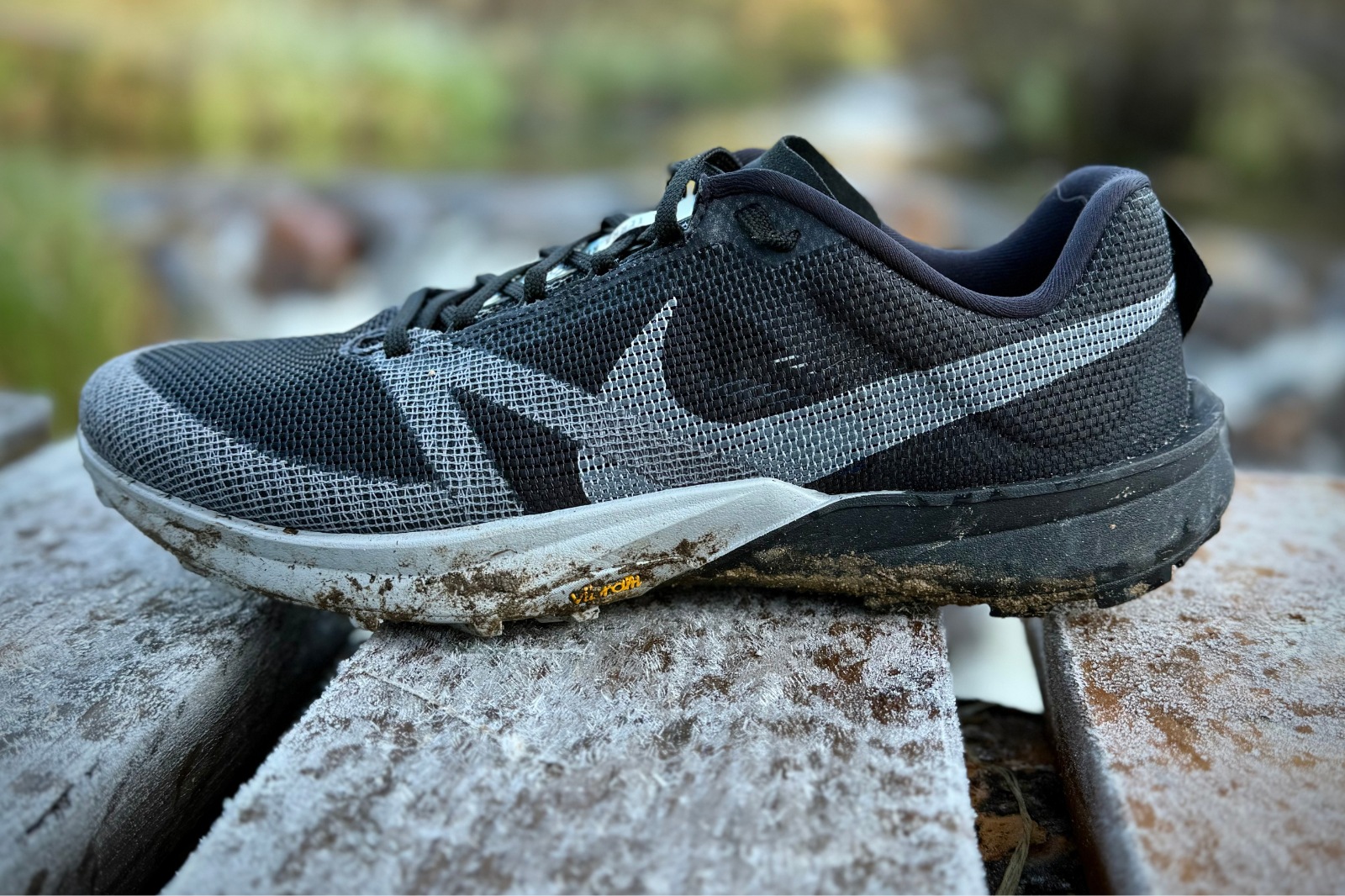
 Read Article
Read Article
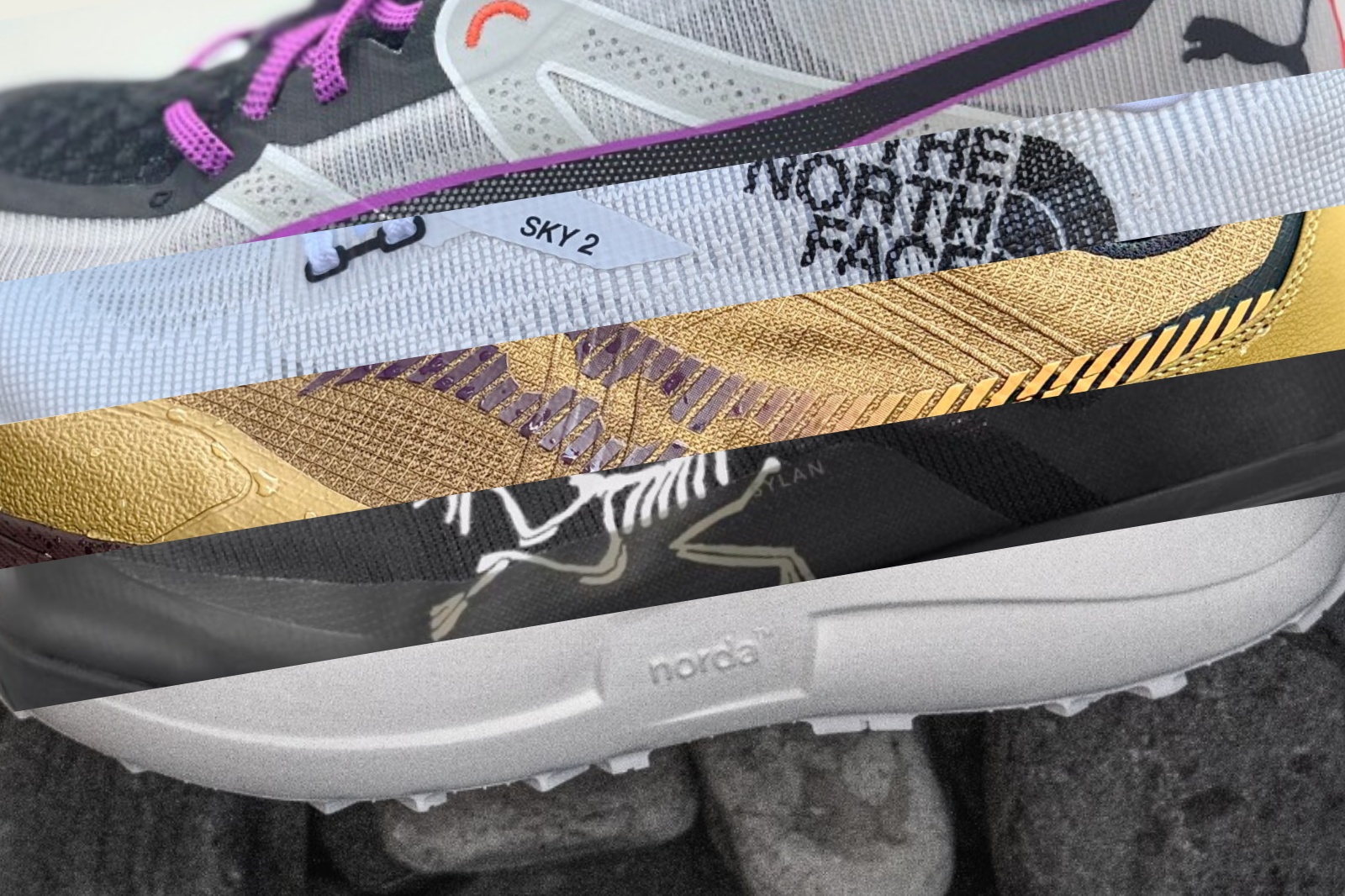
Not a single ASICS? I run in the Novablast and race in the Metasky. (Last year’s)They work well but I’m due for new and wondering your thoughts on this years and how they compare to the ones you love
Both of those shoes came out in 2024. This is a list of shoes from 2025.
Sketcher’s shoe. Which is it the Spark or Burst? You are interchanging two shoes.
I think you mean the Asics Superblast 3, not 2?
Correct, thank you!